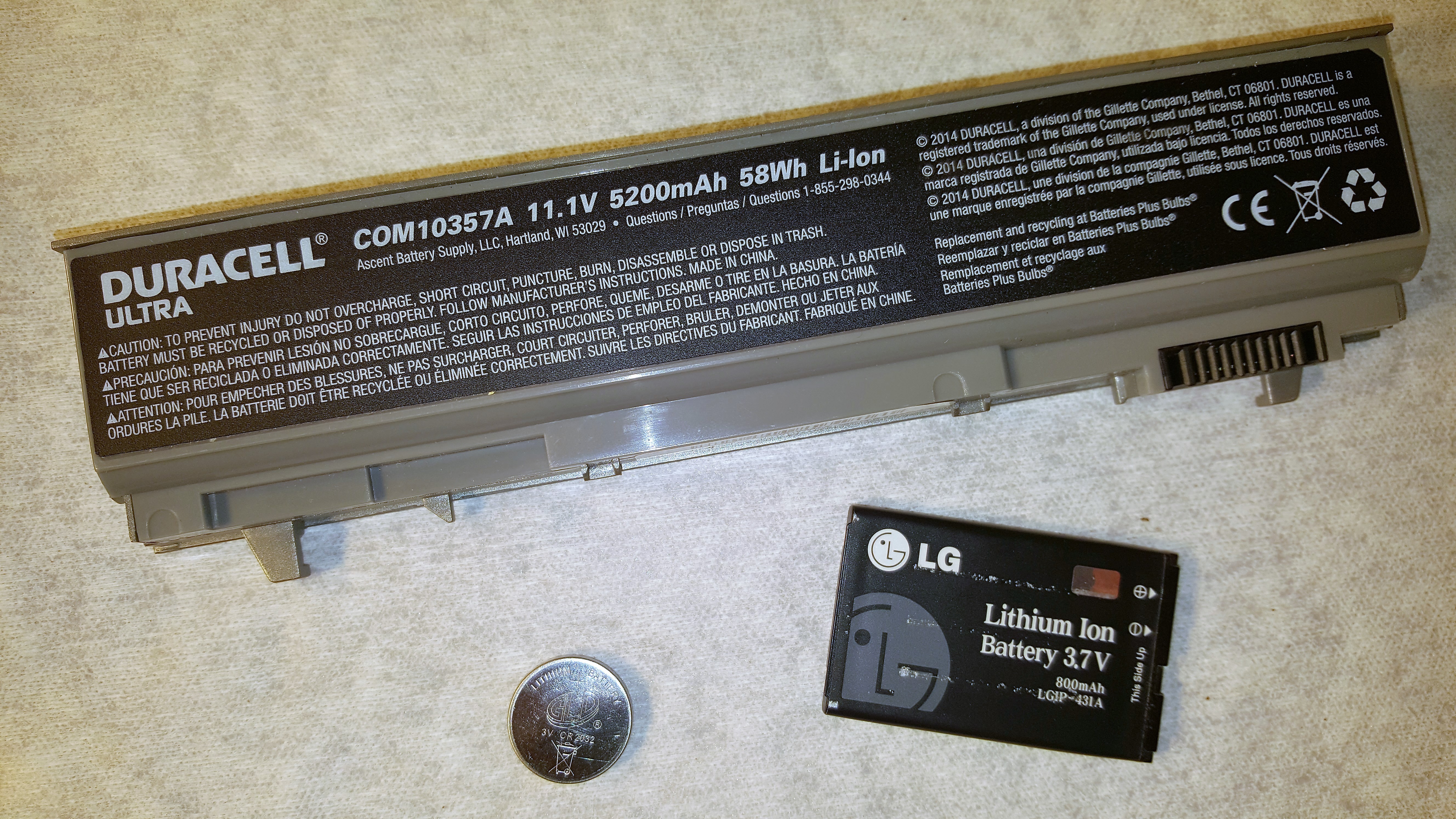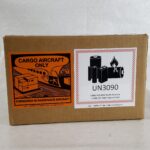Introduction:
The 63rd Edition of the IATA Dangerous Goods Regulations (effective January 1 through December 31, 2022) includes significant changes to the packing instructions for lithium cells and batteries when packed alone (UN3480 for lithium ion or UN3090 for lithium metal). The purpose of this article is to explain the removal of Section II from packing instructions 965 and 968 from the 2022 IATA Dangerous Goods Regulations for lithium cells and batteries.
Background:
IATA is the International Air Transport Association. It is a trade association of the world’s airlines. It supports aviation with global standards for airline safety, security, efficiency and sustainability. The IATA Dangerous Goods Regulations is a “field manual” version of the ICAO Technical Instructions. Written and edited by airline dangerous goods experts, the Dangerous Goods Regulations present the requirements for shipping dangerous goods by air in a user friendly, easy to interpret format.
1.1.4 of the IATA Dangerous Goods Regulations, states that the IATA Dangerous Goods Regulations contain all of the requirements of the ICAO Technical Instructions and include additional requirements and industry standards that are more restrictive.
ICAO is the International Civil Aviation Organization. It is a specialized agency of the United Nations. The ICAO Technical Instructions are a list of requirements for the transportation of hazardous goods by air. The technical instructions are based on the recommended procedures for the transport of dangerous goods created by the UN Sub Committee of Experts on the transport of dangerous goods (TDG Sub-Committee).
The Pipeline and Hazardous Materials Safety Administration within the United States Department of Transportation (USDOT/PHMSA) is responsible for developing and enforcing regulations for the safe, reliable, and environmentally sound transportation of nearly 1 million daily shipments of hazardous materials by land, sea, and air.
At 49 CFR 171.22(a) of the Hazardous Materials Regulations, USDOT/PHMSA authorizes the transport of hazardous materials (aka: dangerous goods) within the U.S. in accordance with the ICAO Technical Instructions with certain restrictions and limitations.
- Lithium ion battery
Scope and Applicability:
This article is applicable solely to the 63rd Edition of the IATA Dangerous Goods Regulations. These regulations are in effect from January 1, 2022 to December 31, 2022.
Compliance with this revision is mandatory after March 31, 2022. Until that date the Section II provisions of PI 965 and PI 968 may be used as they are found in the 62nd Edition (2021) of the IATA Dangerous Goods Regulations.
This revision applies solely to the following packing instructions:
- PI 965 for lithium ion cells and batteries packed alone (UN3480) on cargo aircraft only (CAO).
- PI 968 for lithium metal cells and batteries packed alone (UN3090) on cargo aircraft only (CAO).
Both PI 965 and PI 968 have a multitude of State and Operations variations that may effect the transport of a lithium cell or battery. The effect of these State and Operator variations are not considered in this article.
|
Contact me with any questions you may have about the transportation of lithium batteries by air, highway, vessel, or rail International and Domestic Daniels Training Services, Inc. 815.821.1550 |
What is the Significant Change?
From page xxiii of the 63rd Edition: SIGNIFICANT CHANGES AND AMENDMENTS TO THE 63RD EDITION (2022)
PI 965 and PI 968 – Have been revised to remove Section II from these two packing instructions. To provide shippers with time to adapt their logistics processes to ship lithium cells and batteries in accordance with Section IB of Packing Instruction 965 and Packing Instruction 968, as applicable, there is a 3-month transition period until 31 March 2022, during which time shippers may continue to use Section II.
Consequential amendments have been made to 1.6.1, Special Provision A334, 7.1.5.5.1, Table 9.1.A and Table 9.5.A to reflect the deletion of Section II of Packing Instruction 965 and Packing Instruction 968.
Prior to the revision the Packing Instructions for lithium ion (PI 965) or lithium metal (PI 968) cells or batteries packed alone contained three sections:
- Section IA applied to:
- Lithium cells or batteries with a lithium content above the threshold amount. (see Lithium Content table below)
Or…
-
- Lithium cells or batteries packed in a quantity that exceeded that allowed in Section IB, Table 965-IB or Section IB, Table 968-IB, respectively.
Lithium Content
| Status | Lithium Ion Battery (Watt-hour (Wh) Rating) | Lithium Metal Battery (Lithium Content (g)) |
||
|---|---|---|---|---|
| Battery | Cell | Battery | Cell | |
| Eligible for section II packing instructions depending on quantity per package | Does not exceed 100 Wh | Does not exceed 20 Wh | Does not exceed 2 g | Does not exceed 1 g |
| Subject to section I or IA packing instructions regardless of quantity per package | Exceeds 100 Wh | Exceeds 20 Wh | Exceeds 2 g | Exceeds 1 g |
Section IB, Table 965-IB
| Contents | Lithium ion cells and/or batteries with a Watt-hour rating of 2.7 Wh or less | Lithium ion cells with a Watt-hour rating of more than 2.7 Wh but not more than 20 Wh | Lithium ion batteries with a Watt-hour rating of more than 2.7 Wh but not more than 100 Wh |
|---|---|---|---|
| 1 | 2 | 3 | 4 |
| Maximum number of cells/batteries per package | No limit | 8 cells | 2 Batteries |
| Maximum net quantity (weight) per package | 2.5 kg | N/A | N/A |
Section IB, Table 968-IB
| Contents | Lithium metal cells and/or batteries with a lithium content of 0.3 g or less | Lithium metal cells with a lithium content of more than 0.3 g but not more than 1 g | Lithium metal batteries with a lithium content of more than 0.3 g but not more than 2 g |
|---|---|---|---|
| 1 | 2 | 3 | 4 |
| Maximum number of cells/batteries per package | No limit | 8 cells | 2 Batteries |
| Maximum net quantity (weight) per package | 2.5 kg | N/A | N/A |
- Section IB applied to:
- Lithium cells or batteries with a lithium content at or below the threshold amount packed in a quantity that exceeded that allowed in Section II, Table 965-II or Section II, Table 968-II, respectively.
Section II, Table 965-II
| Contents | Lithium ion cells and/or batteries with a Watt-hour rating of 2.7 Wh or less | Lithium ion cells with a Watt-hour rating of more than 2.7 Wh but not more than 20 Wh | Lithium ion batteries with a Watt-hour rating of more than 2.7 Wh but not more than 100 Wh |
|---|---|---|---|
| 1 | 2 | 3 | 4 |
| Maximum number of cells/batteries per package | No limit | 8 cells | 2 Batteries |
| Maximum net quantity (weight) per package | 2.5 kg | N/A | N/A |
Section II, Table 968-II
| Contents | Lithium metal cells and/or batteries with a lithium content of 0.3 g or less | Lithium metal cells with a lithium content of more than 0.3 g but not more than 1 g | Lithium metal batteries with a lithium content of more than 0.3 g but not more than 2 g |
|---|---|---|---|
| 1 | 2 | 3 | 4 |
| Maximum number of cells/batteries per package | No limit | 8 cells | 2 Batteries |
| Maximum net quantity (weight) per package | 2.5 kg | N/A | N/A |
- Section II applied to:
- Lithium cells or batteries with a lithium content at or below the threshold amount and packed in a quantity that did not exceed that allowed in Section II, Table 965-II or Section II, Table 968-II, respectively.
|
Interested in site specific training at your site that covers this topic, and more! Ask me about my Onsite Training |
After the revision the Packing Instructions for lithium ion (PI 965) or lithium metal (PI 968) cells or batteries packed alone contain only two sections:
- Section IA remains unchanged.
- Section IB now applies solely to lithium cells or batteries with a lithium content at or below the threshold amount and in a quantity that does not exceed that allowed in Section IB, Table 965-IB or Section IB, Table 968-IB, respectively.
- Section II has been removed.
What’s it mean?
After the effective date (March 31, 2022), the packing instructions for a lithium ion or lithium metal cell or battery packed alone (PI 965 or PI 968, respectively) will no longer include the packaging exception from full regulation in Section II. Under the packing instructions of Section IB, a lithium ion or lithium metal cell or battery packed alone is subject to all of the applicable provisions of the IATA Dangerous Goods Regulations (including the General Requirements) except for the requirement to use a specification (UN Standard) packaging.
Consequential Amendments to Reflect the Deletion of Section II of PI 965 and PI 968:
- 1.6.1 Adequate Instruction for Shipping Section II Lithium Batteries removed the reference to PI 965 and PI 968 since these packing instructions no longer contain a Section II.
- Special Provision A334 was revised to remove the reference to Table 965-II and Table 968-II. However, the values from those tables were added to A334 resulting in no effective change to the special provision.
- 7.1.5.5.1 for the lithium battery mark was revised to remove the reference to Section II for both PI 965 and PI 968.
- Table 9.1.A Applicable Acceptance Procedures Summary (9.1.3.3) was revised to remove the reference to Section II for PI 965 and PI 968.
- Table 9.5.A Dangerous Goods Not Required to Appear on the Information to Pilot-in-Command (9.5.1.1.3.4) was revised to remove the reference to Section II for PI 965 and PI 968.
|
Like this article? Subscribe to my Monthly Newsletter No marketing emails! |
Conclusion:
Compliance with the IATA Dangerous Goods Regulations for the transportation of lithium cells or batteries just got harder. Or did it? While the Section II packing instructions offered some relief from full regulation, having three sections (IA, IB, & II) for both PI 965 and PI 968 made the classification of lithium cells or batteries packed alone very difficult. And while the Section IB packing instructions are more stringent than those of Section II (e.g., Section IB requires initial and biennial training whereas Section II does not), Section IB does not require specification packaging which means a shipper of these batteries can still save money on packaging and transportation costs.


